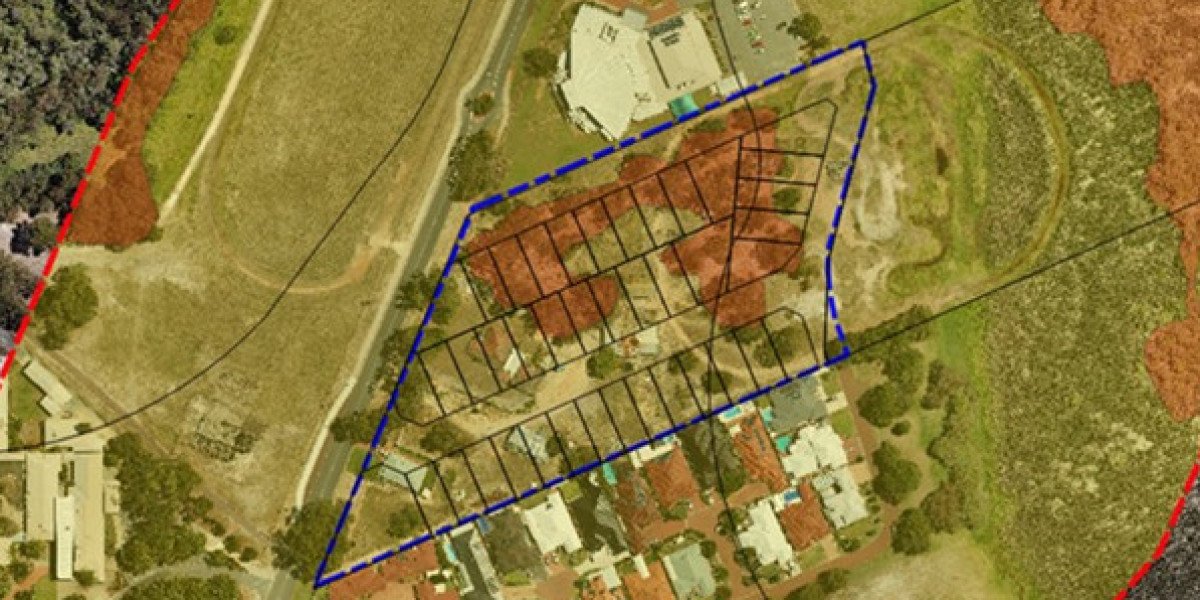Prompt and professional BAL Report assessment reports and certificates from certified bushfire consultants. Call or enquire online today.
As you prepare to build or develop a property in Western Australia, you may have come across the term “BAL Assessment.” But what exactly is it, and why is it required? A BAL Assessment is a crucial step in determining the fire risk of your proposed structure or dwelling, and it’s crucial to understand the process and its importance in ensuring bushfire safety. In this article, we’ll guide you through what a BAL Assessment entails, how it’s conducted, and what you can expect from the report and certificate that follows.
Key Takeaways:
- BAL Assessment is required to determine the fire risk of a proposed structure or dwelling in a bushfire-prone area.
- A BPAD Accredited Level 2 Practitioner should perform the site assessment to provide a BAL Report.
- The BAL Rating is determined by classifying the vegetation in accordance with Australian Standard 3959-2018.
- A BAL Certificate is required for submission with a building permit or DA, displaying the BAL level for the development.
- A Bushfire Management Statement may be required by local government areas to ensure property owners maintain their property and adhere to local requirements, a BPAD Level 2 is required for these.
Understanding the Importance of BAL Assessment
For property owners in Western Australia, understanding the importance of a BAL assessment is crucial in ensuring the safety of their homes and families from the threat of bushfires.
Why BAL Assessment is Crucial for WA Residents
Assessment of your property’s bushfire risk is vital in determining the necessary measures to mitigate the threat of bushfires. A BAL assessment provides you with a comprehensive report that outlines the level of risk your property faces, allowing you to take informed decisions to protect your property and loved ones.
The Role of BAL Assessment in Ensuring Fire Safety
Understanding the fire risk of your property is the first step in ensuring fire safety. A BAL assessment plays a critical role in identifying the potential risks and providing recommendations to minimize them. By conducting a thorough assessment, you can identify areas of your property that need attention, such as vegetation clearance and asset protection zones.
Assessment of your property’s bushfire risk also enables you to take proactive measures to reduce the risk of fire spreading. By implementing the recommendations outlined in the BAL report, you can significantly reduce the risk of fire damage to your property and ensure the safety of your family and loved ones.
What is a BAL Assessment?
Assuming you’re planning to build or develop a property in a bushfire-prone area in Western Australia, you’ll need to conduct a Bushfire Attack Level (BAL) Assessment to determine the fire risk of your proposed structure or dwelling.
Definition and Purpose of BAL Assessment
Assessment of your property’s bushfire risk is crucial to ensure your safety and comply with the regulations. A BAL Assessment is a systematic process that evaluates the potential impact of a bushfire on your property, taking into account factors such as vegetation, topography, and weather conditions. The purpose of a BAL Assessment is to assign a BAL Rating to your property, which determines the necessary construction standards and safety measures to mitigate bushfire risks.
The Process of Conducting a BAL Assessment
With the assistance of a BPAD Accredited Level 2 Practitioner, a BAL Assessment involves a site visit to evaluate your property’s bushfire risk. The assessor will classify the vegetation in accordance with Australian Standard 3959-2018 and identify potential fire hazards.
Another crucial aspect of the assessment process is the evaluation of your property’s Asset Protection Zone (APZ). It’s crucial to ensure that the APZ is clear of fuels before the assessment to avoid a high BAL Rating. A thorough BAL Assessment will provide you with a comprehensive report outlining your property’s bushfire risk and the necessary measures to mitigate it.
The Benefits of BAL Assessment
Once again, a BAL assessment is not just a necessary step in the building process, but it also provides several benefits to homeowners and builders alike.
Identifying Fire Risks and Hazards
One of the most critical benefits of a BAL assessment is that it helps identify potential fire risks and hazards on your property. By understanding these risks, you can take proactive steps to mitigate them and create a safer living environment.
Compliance with Bushfire Planning Reforms
To ensure that your property meets the necessary bushfire safety standards, a BAL assessment is vital. It helps you comply with the new bushfire planning reforms, which are in place to protect lives and properties from bushfire threats.
Hazards such as vegetation, slope, and proximity to neighbouring properties are all taken into account during a BAL assessment. By understanding these hazards, you can implement measures to reduce the risk of bushfire damage and ensure compliance with local regulations.
Peace of Mind for Homeowners
Fires can be devastating, causing damage to properties and putting lives at risk. By undertaking a BAL assessment, you can have peace of mind knowing that your property is bushfire-ready and that you’ve taken all necessary steps to protect your family and assets.
Plus, a BAL assessment provides you with a comprehensive report outlining the fire risks and hazards on your property, giving you a clear understanding of what you need to do to mitigate them. This report can also be used to inform your bushfire management plan, ensuring that you’re prepared in the event of a bushfire.
How to Check if Your Property is in a Bushfire Prone Area
Your property’s location plays a significant role in determining the need for a BAL Assessment. To ensure you comply with the bushfire planning reforms, it’s imperative to check if your property is situated in a bushfire prone area.
Using the Department of Fire & Emergency Services Bushfire Prone Map
Using the Department of Fire & Emergency Services Bushfire Prone Map is a straightforward way to determine if your property is located in a bushfire prone area. This map provides a visual representation of areas prone to bushfires, making it easy to identify if your property falls within a high-risk zone.
Understanding the Bushfire Prone Area Map
Prone areas are designated based on the risk of bushfires, taking into account factors such as vegetation, topography, and climate. The map is regularly updated to reflect changes in the environment and new developments.
This map is a crucial tool in identifying areas that require special attention and planning to mitigate the risk of bushfires. By understanding the map, you can better prepare your property and take necessary steps to reduce the risk of damage or loss in the event of a bushfire.
What to Expect from a BAL Report
Unlike other reports, a BAL Report provides a comprehensive assessment of your property’s current bushfire risk, giving you a clear understanding of the determined risk.
Information Contained in a BAL Report
With a BAL Report, you can expect to receive a detailed document that includes your site plan, site overview and imagery, vegetation distances and justifications, and your BAL Level (Bushfire Attack Level) along with further information and advice.
Importance of a BAL Report for Building Permits and DA
Reportedly, a BAL Report is a crucial document required for submission with a building permit or Development Application (DA).
Understanding the importance of a BAL Report is vital, as it determines the level of threat your property poses to bushfires. This, in turn, affects the requirements for your building project, including the need for a Bushfire Management Statement (BMS) or a BAL Certificate. By having a comprehensive BAL Report, you can ensure that you comply with the regulations and guidelines set by your local government area, avoiding any potential delays or complications in your project.
The Difference Between a BAL Report and a Bushfire Management Statement
All property owners in bushfire-prone areas of Western Australia need to understand the importance of obtaining a BAL Assessment, which includes a BAL Report and may require to be accompanied by a Bushfire Management Statement. While all documents are crucial for building or developing a property in a high-risk area, they serve different purposes and contain distinct information.
Purpose and Content of a BAL Report
Containing the BAL level for your development, a BAL Report is a document required for submission with a building permit or DA. It provides necessary information about your site plan, including setbacks, dimensions, and distances, as well as a site overview, vegetation distances, and justifications.
Purpose and Content of a Bushfire Management Statement
An necessary document for property owners, a Bushfire Management Statement is a single-page document that outlines the Bushfire Protection Criteria from the guidelines. It may be required by your local government area to ensure that you, as the homeowner, take responsibility for maintaining your property and adhering to local fire break notices.
A Bushfire Management Statement is particularly important because it highlights your role in preventing bushfires and minimizing damage to your property. By understanding the contents of this document, you can take proactive steps to reduce the risk of bushfires and ensure your property is safe and compliant with local regulations.
Final Words
Now that you have a clear understanding of what a BAL Assessment is and its importance in ensuring bushfire safety in Western Australia, you can take the necessary steps to protect your property and loved ones. Bear in mind, a BAL Assessment is not just a requirement, but a vital tool in mitigating the risks associated with bushfires. By understanding your BAL Rating and implementing the necessary measures, you can enjoy peace of mind and a safer living environment.








